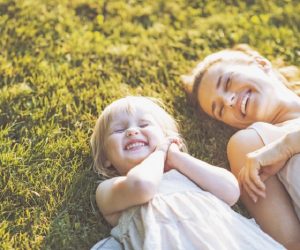Mindfulness can be very helpful in reducing mental agitation, nervousness and dispersion of the smallest.
The world in which we live leads a frantic pace, at least in big cities. Every time we do more, but the time we have remained the same. The children do not escape it. School, homework, exams, extracurricular activities, birthday parties … There are many reasons that can lead to smaller, as adults, to excessive mental agitation, nervousness, dispersion or even suffer stress, which, maintained day after day, can have serious consequences to health.
In order to meet these states as unsavory, the mindfulness can be very useful. This attitude of “mindfulness” is to focus on the present moment, in the here and now, curiously, without exercising any judgment or assessment.
In the case of the smallest, its benefits are associated with improved concentration and thus academic performance; decreased stress, agitation or discomfort; the development of emotional intelligence; and the promotion of interiority.
The mindfulness, whose practice came to the West from the hand of Jon Kabat-Zinn, medical and PhD in Molecular Biology from the prestigious MIT (Massachusetts Institute of Technology) and now professor at the University of Massachusetts, is a very simple tool to connect with our breath and our body, and take away from our thoughts and emotions. This mindfulness should begin in oneself and meditation is the main tool. It is also within reach of children, if introduced as a game and are taught their dynamics.
You may also like to read another article on CarolineJoyBlog: Children and television
Mindfulness techniques for children
Paloma Sainz Vara de Rey, author of Mindfulness for children (Zenith, 2015), offers a tour of some of the fundamental aspects of mindfulness and activities that can be done with children to introduce them to this practice:
– Breathing: We anchor in the here and now. A deep breath calm may return us and make us feel good at any time.
What to do with children: Building a paper boat. Put on your belly, lying on your back. Inhale and make a big wave from your gut to your chest. This game helps children discover that only a deep breath your body and your mind relax.
– Body awareness: Must learn to listen to our bodies, because we are often absorbed in our thoughts and we forget what the stomach, legs or chest are telling us.
What to do with children: We can dance like we feel like or feel at the time. Dancing is one of the best ways to connect with our body and express ourselves.
– Discover the beauty in every moment: You are not alone in nature, which brings together all shapes and colors possible.
What to do with children: getting children to stand and contemplate a flower carefully provide moments of mindfulness. You can also make a list of words magic, only to hear you feel good, and then share them with others.
– Time to connect: Devote some time each day to be alone with ourselves, in the here and now, to see how we feel and to act serenely without automation.
What to do with children: once in bed, take a few minutes to be calm and give thanks for the day we’ve had. We can do even a few breaths, some waves together and create a prayer or song to recite every night as if it were a mantra.





